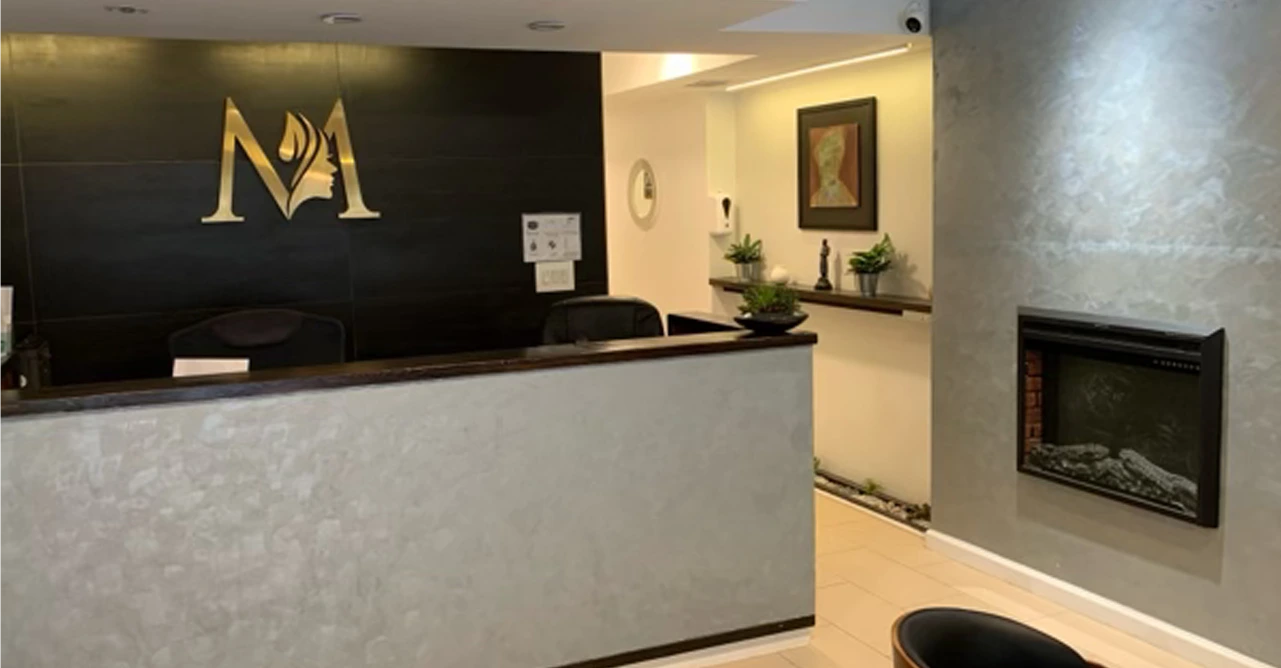Murray Hill Plastic Surgery in NYC offers expert chin implant procedures to enhance facial structure and balance. With a focus on personalized care and advanced techniques, our practice helps patients achieve refined jawlines and improved facial harmony. Whether addressing a weak or recessed chin, chin implants provide lasting results that complement each individual’s unique features.

A well-defined chin line is a significant factor in facial appearance. Chin surgery can be undertaken to augment or reduce the size of the chin. Surgery performed by Dr. M. Zakir Sabry to correct bite problems can be done at the same time as chin surgery.
A chin augmentation is a surgical procedure that reshapes or enhances the size of the chin. It may be done by inserting an implant, moving, or reshaping bones. Chin implants are commonly done in conjunction with rhinoplasty or facial liposuction to achieve balance and harmony in the face.
The reason for a broad face may be thick and wide jawbones or thick and bulky muscles in the lower face. Correction usually entails filing down the bone and removing part of the muscle. This technique does not adversely affect jaw function; it will only reduce the fullness of the lower face. The final result is a softer angle and a smoother, more oval-shaped jawline.

During your initial consultation, Dr. Sabry will answer your questions about the procedure and discuss any safety concerns related to the surgery. He will also review your medical history and aesthetic goals.
Dr. Sabry will have X-rays taken of your face and chin. These X-rays will show which part of the chin to operate on. Dr. Sabry will discuss using an implant or your natural bone or fat. If the best option for you is an implant, he will review the wide variety of implant sizes and shapes available and guide you to the ones that will optimally fit your anatomy and give you the best outcome. If you are a smoker, you will be asked to quit smoking for 6-8 weeks before your procedure.
The surgical procedure is usually done under general anesthesia or with local anesthesia and sedation. Your comfort and safety are the top priorities throughout the surgery, and the anesthesia method will be chosen based on your medical history and personal preference.
Dr. Sabry augments the chin by making an incision either in the natural crease just under the chin or inside the mouth, where the gum and lower lip meet. By gently stretching the jaw tissue, he will create a space where an implant can be inserted.
Once the pocket is prepared, the selected chin implant is carefully positioned to ensure it aligns perfectly with your natural bone structure. Dr. Sabry will adjust the implant to achieve the desired shape and contour before securing it in place, ensuring a balanced and natural-looking enhancement.
The incision will be closed with fine sutures. If the incision is made inside the mouth, there will be no visible scarring. If the incision is made under the chin, the scar will be visible, but it is usually hard to notice and will fade over time.

During a chin reduction surgery, the incisions are made either inside the mouth or under the chin. The bone is sculpted to a more pleasing size and shape. In the case of orthognathic surgery, Dr. Sabry will make an incision inside the mouth and reposition the facial bones. Depending on the extent of the work to be done, the procedure can take approximately three hours.
Immediately after surgery, Dr. Sabry will apply a dressing that will remain in place for two to three days. There will be some soreness and tenderness. Post-operative discomfort can be controlled with prescribed medications. Chewing may be difficult immediately after chin surgery, so a liquid and soft food diet may be required for a few days. Most patients feel a stretched, tight sensation after the surgery, but this usually subsides in a week.
Under Dr. Sabry’s meticulous care, all measures are taken to minimize potential complications. They are rare and usually minimal, but may include:

Chin augmentation typically does not change how you eat or affect your bite. The procedure focuses on enhancing the shape and projection of the chin without interfering with the jaw joints or muscles responsible for chewing. Since the implant is placed carefully around existing bone and tissues, normal eating mechanics remain intact after healing.
If you’re considering a brow lift in NYC, we invite you to schedule a consultation with our plastic surgeon, Dr. M. Zakir Sabry. During this meeting, you’ll have the opportunity to discuss your goals, ask questions, and learn how a brow lift can help refresh your appearance and restore a more youthful, lifted look. Don’t let a heavy or tired brow hold you back any longer. Contact Murray Hill Plastic Surgery & Vein Center today to take the first step toward a more confident, rejuvenated you with brow lift surgery in NYC.
If you’re considering a brow lift in NYC, we invite you to schedule a consultation with our plastic surgeon, Dr. M. Zakir Sabry. During this meeting, you’ll have the opportunity to discuss your goals, ask questions, and learn how a brow lift can help refresh your appearance and restore a more youthful, lifted look. Don’t let a heavy or tired brow hold you back any longer. Contact Murray Hill Plastic Surgery & Vein Center today to take the first step toward a more confident, rejuvenated you with brow lift surgery in NYC.

Chin implants can address various concerns related to facial structure and balance. The following groups typically seek chin augmentation to improve their facial proportions:
Individuals with a weak chin
Those who have a recessed chin
Patients aiming to balance their facial proportions
People with congenital chin deficiencies
Individuals seeking correction after trauma or injury
Candidates who want to complement other facial procedures

Chin implants offer many advantages that contribute to better appearance and higher confidence. Patients often appreciate how this outpatient procedure enhances their overall facial harmony. You can expect:
In NYC, chin implant surgery varies from $5,000 to $10,000, depending on the complexity of the procedure and the type of implant used. For an accurate estimate tailored to your needs, contact Dr. Sabry’s office to discuss the details of your surgery in NYC.

Murray Hill Plastic Surgery approaches chin implants with a precision that balances artistry and surgical skill. Under the care of a board-certified plastic surgeon, our procedures are designed to minimize disruption, often using a small incision technique that reduces visible scarring and recovery time. Attention extends beyond mere augmentation, addressing concerns like a double chin through tailored strategies that enhance overall facial plastic surgery outcomes. Our method reflects Dr. Sabry’s dedication to personalized care and commitment to achieving natural, harmonious results without compromise.
Yes, chin implants can often be combined with other cosmetic surgery procedures to achieve more comprehensive facial enhancement. Common combinations include facial implants (e.g., cheek implant surgery) and neck liposuction to refine the jawline and neck area. Combining procedures during a single surgery can optimize overall results, reduce recovery time, and provide balanced harmony across facial features. Dr. Sabry will evaluate your needs and recommend the best approach, including other procedures to complement your chin augmentation.